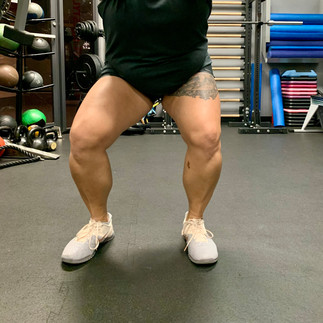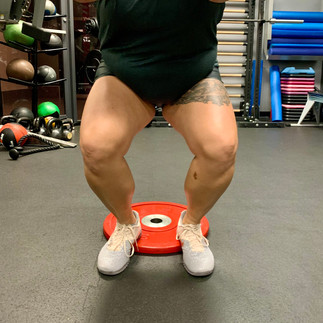Find Your Squat – Because No Two Bodies (or Squats) Are the Same. By Kyle Lane – Personal Trainer in Vancouver, BC
- Kyle Lane
- May 27
- 2 min read
One of the best parts of being human is that we're all different. And that includes our bodies. Whether you're hiking the Grouse Grind, biking around Stanley Park, or running after your kids at Kits Beach—how your body moves is unique to you.
This matters especially when it comes to foundational movements like the squat.
From hip socket angles to leg length and ankle mobility, your body might be different not just from others—but from one side of your own body to the other. So what does that mean for your squat?
It means the “perfect squat” doesn’t exist—only the best squat for you.
To squat in a way that’s strong, stable, and pain-free, you need to experiment with your setup. Whether you're working with a personal trainer here in Vancouver or exploring on your own, here are a few key variables to play with:
1. Foot Width
From feet directly under your hips to a wider stance, this is often the first thing I adjust with clients during private sessions or semi-private training around Vancouver. This one change can make a huge difference in mobility, comfort, and depth. Most clients say one stance “just feels better”—that’s your clue. Still, different widths have different benefits, so mix it up occasionally.
2. Toe Position
Once your stance feels right, look at how your toes point. Parallel? Slightly turned out? One turned more than the other? This can be subtle but impactful.
👉 Pro tip: If you notice one foot always turns out by the end of your squat—no matter how often you “correct” it—it might be your body telling you something. Try starting in that position and see if your squat feels better.
3. Heels Elevated
Got tight hips or ankles from years of skiing in Whistler or walking Vancouver’s steep streets? Try squatting with a small plate (2–3 cm) under your heels. This simple tweak helps many clients squat deeper and feel more balanced—especially when we train indoors during the rainy season. Just don’t go too high—anything above ~6 cm can stress your knees.
Personal Trainer in Vancouver Squat Rule #1: Listen to Your Body
Take notes after your workouts. Which squat variation felt strong? Which one left your knees or hips feeling off? The goal isn’t to force a textbook squat—it’s to find the one that supports your strength, your movement, and your lifestyle here in beautiful BC.
And let’s not forget:
You don’t have to squat at all if it hurts. There are tons of amazing movements we can do here at Kyle Lane Personal Training that help you build strength and confidence—without pain.
Want help finding your ideal squat or building a routine that works for your unique body? Whether you're in Kits, Mount Pleasant, or just looking to feel stronger and healthier in your day-to-day life, I’d love to help.
Train smart. Stay strong. Move with confidence.
Cheers, Kyle Lane Certified Personal Trainer | Vancouver, BC Helping busy parents, professionals, and active adults feel their best—one workout at a time.
























Comments